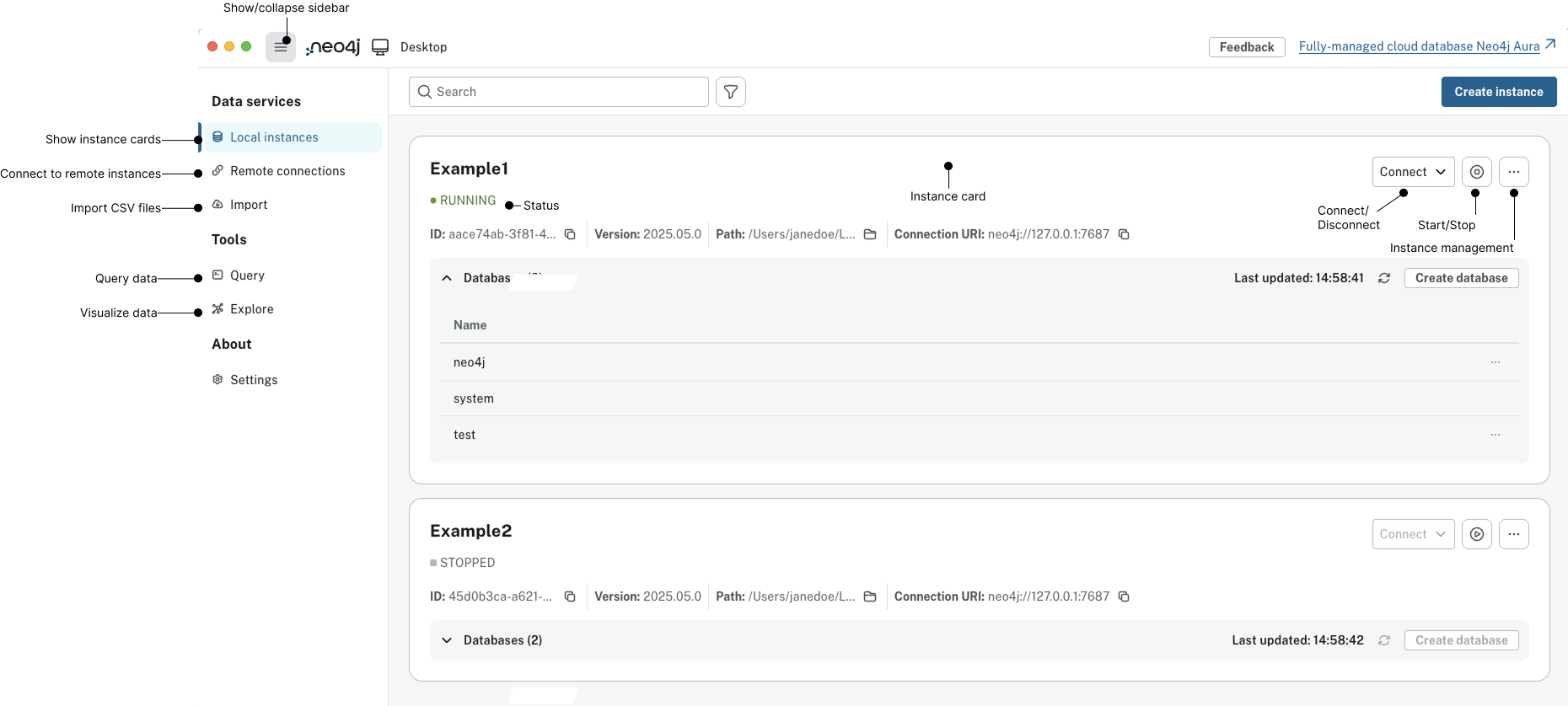Visual tour

Instances
An instance in Desktop represents a DBMS, database management system, which is a Neo4j server installation which contains a minimum of the system database and a default database.
Upon creation of an instance, the default database is called neo4j, but you can rename it or create a new database as the default.
Neo4j Desktop includes a free Developers License of Neo4j Enterprise Edition which gives the user local access to Enterprise Edition features, such as multiple databases.
An instance in Desktop can thus contain a number of databases in addition to the system and default databases.
See the Operations Manual → Database administration for more information on multiple databases.
When you create a new instance (with the Create instance button), this will be with the default version of Neo4j. However, you can also select a different version of Neo4j. Keep in mind that this often requires the resources for this to be downloaded and therefore requires an internet connection.
Import
Desktop offers an import service for local .CSV files. You find Import in the left-hand navigation.
To import your .CSV data into an instance in Desktop, you first need to connect to the instance, then you can drag and drop your local files or browse for them, sketch a data model (or use an existing one) and map your files to the model, and then you run the import.
This import service is also available in the Aura console, with support for additional data sources. For more information about the import service, see Aura Documentation → Import, but keep in mind that the service in Desktop only supports .CSV files.
Tools
There are several ways to interact with the graph. One way is using graph tools and Desktop comes bundled with two, Explore and Query. Explore and Query are used to visualize and query the graph and they are available in the Aura console as well as standalone tools (as Bloom and Browser, respectively). For more information about Explore and Query, see pages on Explore and Query.
The tools are available in the left-hand navigation.
